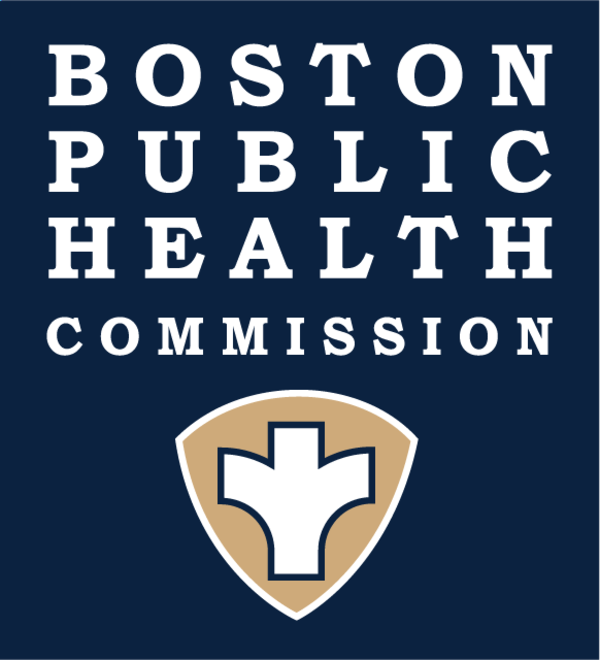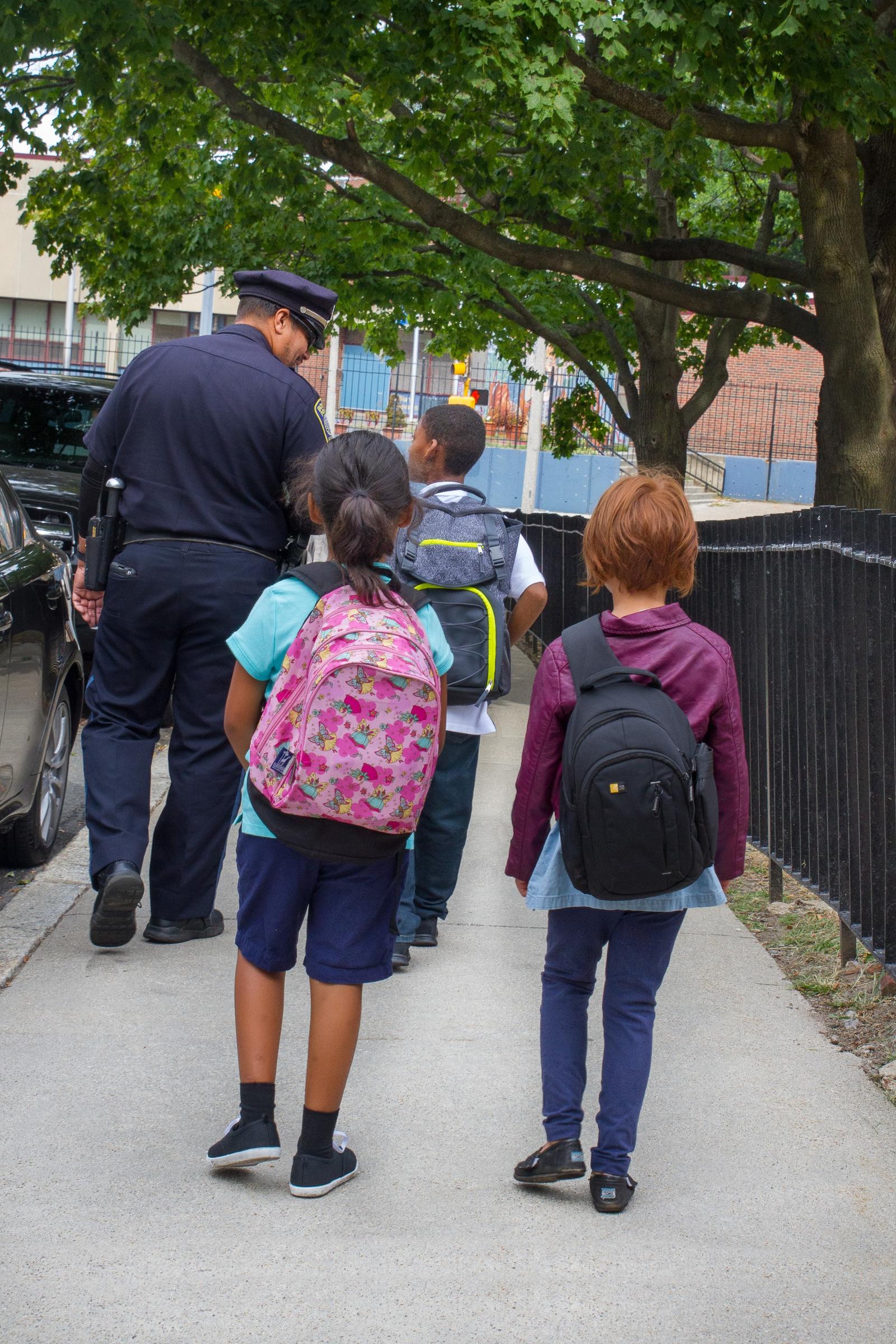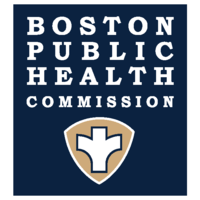Boston Safe Routes to School
The citywide effort promotes walking and biking to school, and supports and rallies neighborhoods and the community as a whole to work toward making walking to school safe, popular, and fun. We work to create safer streets and conditions for children to get to school safely.
The Boston Public Health Commission and Streets Cabinet encourages residents to choose active transportation methods to move around the City. Below are some key programs and resources to support walking, biking, and rolling through the City!
Safe Routes to School
Background InformationHistory of Boston Safe Routes to School & Task Force
The city-wide Boston Safe Routes to Schools (SRTS) initiative began in 2015, led by the Boston Public Health Commission (BPHC), with a goal of increasing physical activity among youth and preventing pedestrian and bicycle rider injuries. BPHC worked with Boston Public Schools (BPS) to develop in-depth SRTS programming at priority K-8 schools and resources to encourage walking and biking to school, including:
- School-based walking route maps;
- Updated Physical Education classes on pedestrian safety; and
- A city-wide SRTS brand and communications plan.
In 2019, the Boston Planning and Development Agency (BPDA) and Boston Transportation Department (BTD) secured a MassDOT SRTS grant for street improvements in the Garrison-Trotter neighborhood in Roxbury.
BPHC launched the city-wide Boston SRTS Task Force. Along with BPHC, BPS, and BTD, members of the Task Force include the Massachusetts SRTS Program, BPDA, and Boston Emergency Medical Services (EMS).
Safe Routes to School in the Streets Cabinet
In 2023 the Streets Cabinet hired its first SRTS Planner to work with the SRTS Task Force, individual schools, and communities around the schools to advance the Boston SRTS initiative.
With Boston’s SRTS program, the city is hoping to increase the number of students who walk, roll, bike, and take transit to school, while also reducing the number of pediatric crashes that happen near schools.
A related goal is to make active transportation an enjoyable and lifelong habit. Students who commute by active transportation have more control over their commute times, making it easier to arrive on time, and they arrive energized and ready to learn.
final goal is to strengthen the relationship between the school and the community by cultivating community partners who share the vision of creating safe, low-stress, traffic calmed environments for students. By tackling unsafe speeds, redesigning arrival and dismissal, and reducing unhealthy behaviors such as idling and distracted driving, we can create a culture of empathy and hold ourselves accountable for reducing traffic crashes in our school communities.
The SRTS program will initially focus on about 12 priority schools that are located in areas of the city with the highest concentrations of pediatric crashes. Our hope is that we can recruit all of the priority schools to become enthusiastic SRTS partners, and together we can create clear and organized arrival and dismissal plans, safe walking and biking routes, and sustainable systems to make walking, rolling and biking to school a joyful part of the day. We look forward to receiving your proposal.
- Track pedestrian and bike safety education within schools.
- Evaluate school environments to increase active transportation.
- Increase the number of schools participating in encouragement activities.
- Connect BPS families with the infrastructure safety projects happening in their area and educate families how to get involved.
- Partner with BPD on improving and raising the profile of the school traffic supervisor program.
- Connect City agencies, partners and others working on SRTS to share updates and ideas.
- Create new partnerships with community based businesses and organizations throughout Boston.
Mass Safe Routes to School
MA from all over the state come together for this annual Safe Routes to School event. We celebrate students’ active commutes, including:
- walking, biking, and rolling to school, or
- even during recess or lunch.
These celebrations encourages safety, fun, and healthy and active lifestyle. Learn more and sign up here!
Walk/ BIke/ Roll to school Days You’re Invited to Walk, Bike, and Roll!
Join in on Safe Routes to School's Flagship Days this school year!
It’s easy to join. We’re bringing together schools from all over the state for this annual Safe Routes to School event. Our goal is to celebrate students’ active commutes, including:
- walking, biking, and rolling school, or
- even during recess or lunch.
We’ll provide the goodies. Safe Routes to School can give you ideas to encourage safety, fun, and participation, including free student bookmarks and stickers. You can also download fun activities on our website.
Schools – don’t miss the fun! Make your school and students count by registering online.
Families – encourage your school to register now! If school is virtual for you on iWalk day, you can still join in by taking a break outside to walk, bike, or roll in your neighborhood.
Show your spirit. Showcase your iWalk day by posting photos and videos (be sure to tag us!) to Facebook, Instagram, and Twitter using #MASRTS
Saftey Surge
In 2023, we launched a new approach to planning, designing, and building speed humps. Instead of asking residents to nominate their street for traffic-calming, we will work proactively to add speed humps on all eligible streets, in every neighborhood.
Over the next three years, we will be working to design and build speed humps in many neighborhoods of Boston. The below map shows where we have built speed humps, where we are currently designing speed humps, and where you can expect to see speed humps in the next few years. Our new program will add nearly 100 miles of streets with speed humps.
Boston Bikes:
We help students from grades 2 to 12 learn bicycle safety through lessons, practice, and having fun. Boston Public Schools (BPS) are invited to apply for our program in the fall and spring each year. We typically visit each school for two weeks. We can sometimes accommodate one-week sessions for smaller schools.
Roxbury Safe Routes to School Project:
We are working together with residents and Ellis Elementary to develop a plan for improving street safety in the neighborhood. Ideas include:
- adding speed humps
- raised crosswalks, and
- curb extensions to create safer streets and crossings.
Bos311:
Citizens can report non-emergency issues. These include issues like broken street signs or traffic signals, faded crosswalks, or other impediments to active travel.
Boston Public Health Comission:
To work in partnership with communities to protect and promote the health and well-being of all Boston residents, especially those impacted by racism and systemic inequities.
MassSRTS:
The program works to increase safe walking, biking, and rolling among elementary, middle, and high school students by using a collaborative, community-focused approach that bridges the gap between health and transportation.
On April 11, 2024, City Councilors Sharon Durkan and Enrique Pepen hosted a working session with the Streets Cabinet to launch an initiative to standardize the implementation of school zones. The presentation by the Streets Cabinet is provided below.
Add walking, biking, and rolling to your commute
Women's Learn to Ride Workshops
Whether you never learned to ride or you’re looking to pick up some new bike skills, we’re here for you!
Boston by Bike
Ready to try biking in Boston? This guide will help you get started.
Free Bike Helmets, Safe Cycling and discounted Bike Share
Bike safety programs including ways to get a free helmet!




